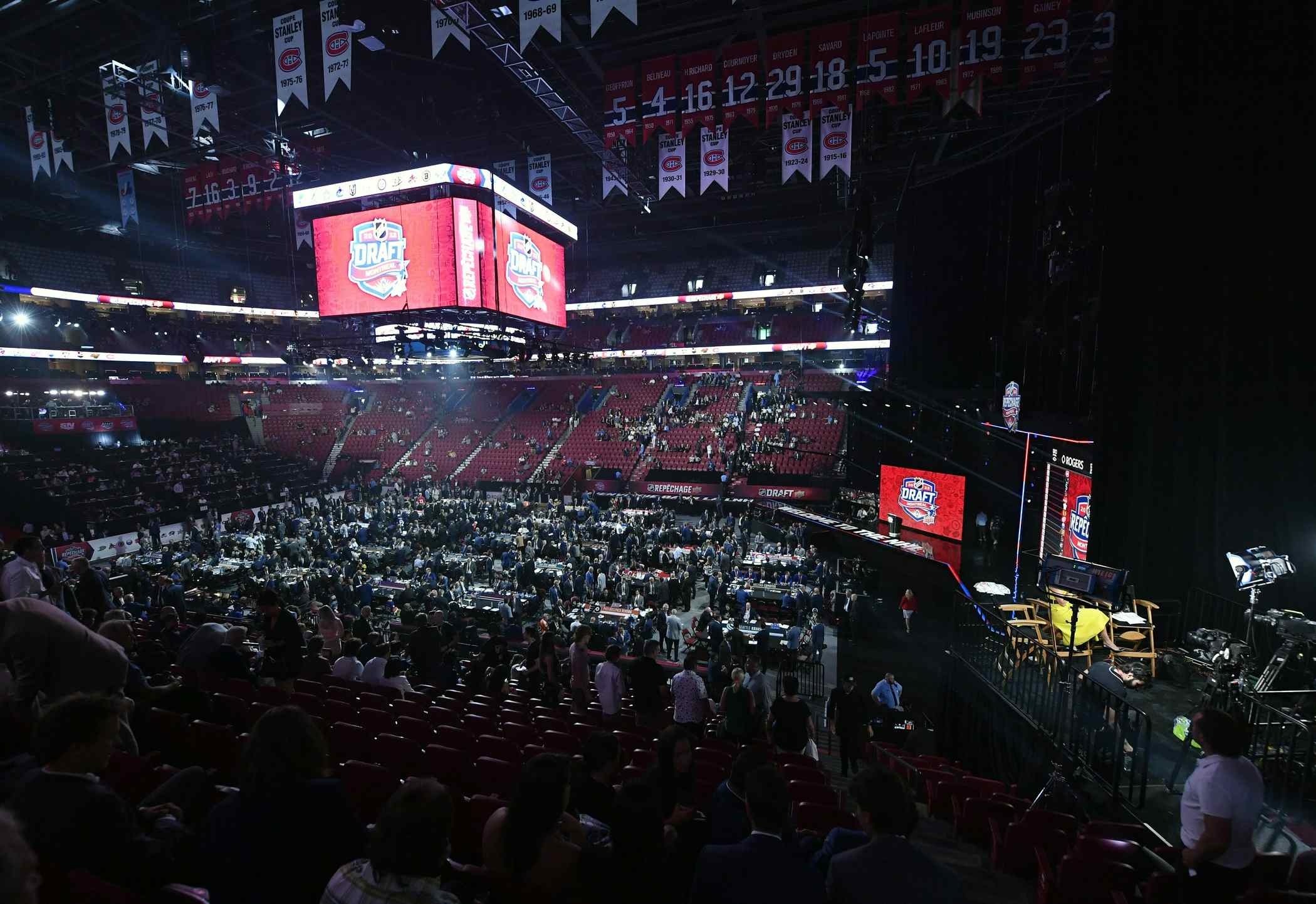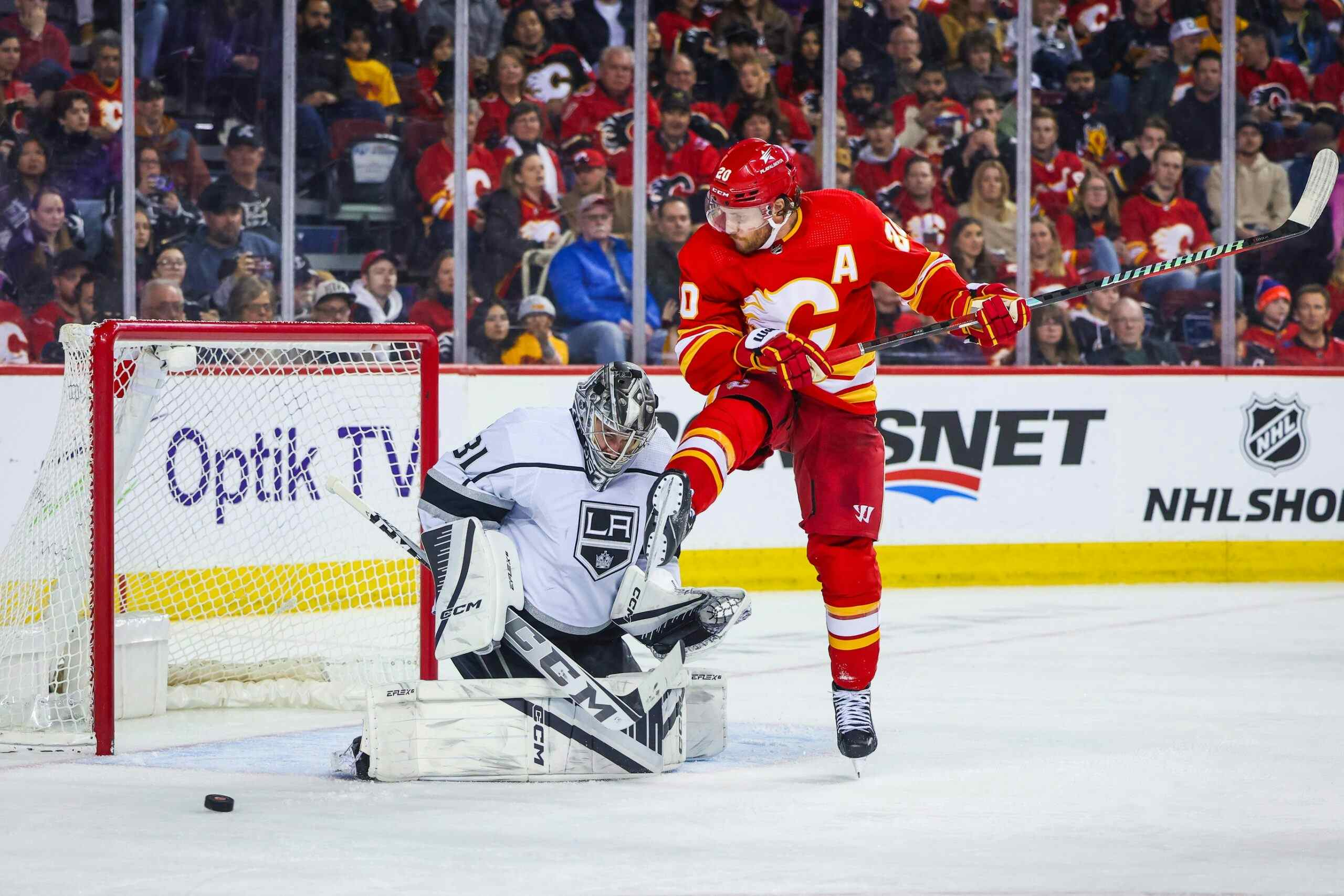5 Things: Don’t give in
By Ryan Lambert
8 years ago
1) You want how much?
So CalgaryNEXT (or whatever they’re going to end up calling it) was unveiled yesterday with a handy pie chart of the costs and how the tab would be picked up.
In the end, the Flames seem to commit $200 million to the project, which conveniently includes a new rink and stadium for their various sports properties, out of a total $890 million cost. That’s less than 22.5 percent of the bill, and it’s a bilious initial proposal. A lot of transparent talk immediately followed from media cronies — Calgary’s answer to David Staples and his laughable 18-month campaign to get the city of Edmonton to pass the cost of Darryl Katz’s new rink onto the taxpayers — who said things like “this is about More Than Just The Flames” and “what is the city of Calgary without an NHL team?”
(The latter included a revolting “You wouldn’t rob a little boy with cancer of the team he loves, WOULD YOU?” plea. On Day 1 of what is likely to be a long ordeal. That’s overplaying your hand as much as it is cloying and morally reprehensible.)
The immediate reaction outside the pages of the local papers, though, was thankfully one of incredulity and anger. How could a team ask for $690 million from a city with an economy based on a commodity that, well, isn’t doing so hot these days, with the Canadian dollar at its weakest point in years? These are reasonable questions to ask, and to its credit the mayor’s office seemed more than happy to be among those asking them.
2) A convenient omission
This is especially concerning, though, because the initial CalgaryNEXT — so named because, you see, this is the future of the city!!!! — presentation those numbers are only the cost of putting up the requisite buildings in the proposed area. Not of cleaning up the creosote contamination or altering and/or building more infrastructure to get more people to the new arena district. Those costs could add another 50 percent or so to the total bill, if my understanding is correct.
Who’s putting their credit card down with that check? It’s obviously not clear, but given the initial ask from the franchise, it’s a good guess that the party holding the bag there will have a name that rhymes with “waxlayers.” It seems to me that $500 million or more is a lot of money to leave out of an estimate, but if this is the dressed-up, palatable version of the first offer on the table, then holy hell this could end up being bad for the city.
3) Here’s a good rule of thumb
Now, it’s important to note here that not all of that cost is going to come from taxpayers by and large. What I mean by that is a pretty big chunk is going to come in the form of a tax tacked onto the price of every ticket at the new rink. As “ways to pay for stadiums in this day and age” go, that is, I think, the least objectionable way to do things.
That’s because you’re only being taxed for using the facilities as much as you actually do so. And usually, the additional cost is pretty low; most I’ve seen are in the neighborhood of $2. So even if you’re a season ticket holder for the Flames, Stampeders, and Hitmen, you’re only paying $172 per year on top of the already-considerable cost of your investment. Assuming $50 for a Flames game, $30 for the Stamps, and $20 for the Hitmen ($3,040 not counting playoffs, preseason, etc.) that ticket tax would add about 5.7 percent to the total. If you can spend that much on tickets, the extra $172 isn’t going to make or break your decision. This is also true of people spending $50 per game; the $2 increase ain’t a big deal.
But again, this all assumes that there isn’t something gross about the average person paying for something that makes billionaires money. Murray Edwards, apart from being a key driver behind two NHL lockouts in the last decade, is worth billions of dollars, and if this was such a great investment, why aren’t he and his business partners digging between the couch cushions to scrape together the $1.something billion this proposed project (MORE THAN A BILLION DOLLARS!) themselves so they don’t have to cut the City of Calgary in on any of the revenues?
Oh yeah, it’s because most of these types of deals don’t cut their cities in on them, so why should Calgary be any different? Right right right. If you hear the details of the Edmonton arena deal — they don’t even get revenues from things like naming rights, non-hockey events, etc. — it seems like there’s shockingly little return on investment for the city. Which doesn’t (and to some extent shouldn’t) be of any concern at all to the billionaire plutocrats behind these schemes.
4) You’re not going to die
The reason cities are so anxious to bend over backwards to give money they don’t have to pro sports franchise owners — as with recently bankrupt Detroit giving hundreds of millions to billionaire Red Wings owner Mike Ilitch — is that, as the Sun’s goons were so quick to remind Calgarians this week, cities have a lot of civic pride wrapped up in their sports teams. And that’s their prerogative, of course. It only makes sense that they would. But owners know this, and aim to exploit it by any means necessary to save as much money as possible on building these sometimes-billion-dollar monuments to excess.
They will threaten to move teams, for instance, saying, “Hey look what happened with Atlanta and Winnipeg,” as though that’s any sort of reasonable comparison. Katz showing up in Seattle like, “Oh, hmm what’s going on down here?” was a ploy so transparent as to be non-existent; there was never any threat of the Oilers going anywhere. But if it milked $25 million more out of Edmonton’s city council, then the cost of the plane ticket and hotel room was very worth it. Likewise, in the coming months I would urge Flames fans to keep in mind that there is no market more attractive to Flames ownership than Calgary. Seattle isn’t going to build your team an arena, and neither is any other boogeyman relocation city. Kansas City? Portland? Yeah right.
And another thing owners often do, as we saw in Edmonton, is try to tie these arena demands into “revitalization projects” that ostensibly benefit the whole entire city and the economy does great wow aren’t you so lucky we came up with this idea?!?!?! That’s because, despite numerous independent studies that show the positive economic impact of “stadium districts” are negligible or non-existent, people continue to buy team-funded lies on the subject. Okay, a bunch of new restaurants and bars within walking distance of the rink? Great, but what about the ones near the old one? Again, if it’s such a great idea, why wouldn’t the Flames’ parent company invest in all this itself?
The lesson here, and one that must be repeated over and over and over until the speaker’s throat is hoarse and the listener’s ears are bleeding, is a simple one: “Don’t give billionaires money.”
5) Reasonable models
I should say here that I don’t have a dog in this fight. I live in Boston, on the opposite side of the continent and in a whole different country. But the thing about Massachusetts is that it does indeed offer a few decent models for how you can build stadiums without breaking the goddamn bank for them.
Massachusetts is, of course, famously ultra-liberal and pretty good at telling corporations to go stick it. Residents of Boston, for instance, recently bullied a hard-charging mayor’s office into dropping the Olympic bid for the 2024 games because, hey, the U.S. Olympic Committee wanted taxpayers to pick up the tab on a bunch of stuff. This is, of course, the Olympic business model, and that also extends to North American pro sports franchises, because it works.
Anyway, because of that whole moral objection to taxpayers paying for billionaires’ business centers, the state of Massachusetts and various cities around the state have occasionally run into upset sports owners multiple times in the last two decades.
It wasn’t so long ago that Red Sox owners wanted to build a new park somewhere in the city, and the city of Boston wouldn’t Play Ball (haha that’s a good one). No help on getting land, no help on stadium costs. So they privately paid for a bunch of improvements to the existing Fenway — which opened the day the Titanic sank! — and while the park still has its problems, it’s not a bad place to watch a ballgame. (One phase of the Red Sox ownership group’s plan involved building a “Sports Megaplex” that would have also housed the New England Patriots, and seems awful similar to CalgaryNEXT.) Until the Sox started to really suck the last few years, the park was sold out every night, and the team has made money hand over fist despite the restraints of an ancient facility.
Speaking of the Pats, owner Robert Kraft was likewise looking for a new stadium in the late ’90s and early 2000s, and at one point even threatened to move the team to Hartford, Connecticut, where he hoped to get a city-funded stadium built. Everyone balked, and Kraft ended up paying for Gillette Stadium privately, then eventually building a little shopping district of his own on adjacent land he already owned. It has worked out pretty damn well for Kraft.
And in the mid-90s, the old Boston Garden was in sorry shape. Here too, Jeremy Jacobs — the NHL’s Charles Montgomery Burns to Murray Edwards’ Aristotle Amadopolis — ran into plenty of municipal and state government-related problems, until Delaware North (Jacobs’ company) was able to secure loans to pay for the building himself. Jacobs is likewise doing just fine with how everything went.
Another example: I am from a city called Lowell, Massachusetts, where a municipal renaissance occurred in the mid-1990s that included the construction of two municipally funded sports venues: Tsongas Center, nee-Arena, a 6,500-seat hockey venue that housed an AHL franchise and the local college hockey team (UMass Lowell), and LeLacheur Park, a 5,000-seat baseball stadium that’s home to a short-season Single-A Red Sox affiliate and UMass Lowell’s baseball team as well.
These obviously do not carry the cost of a CalgaryNEXT, but they are instructive in a way. The city and University paid a combined $35 million or so (in 1998 dollars, so more like $52.5 million today) for the two buildings. But the city and school owned the buildings, not the teams that inhabit them. You can bet that wouldn’t happen with CalgaryNEXT, which, yes is a project that’s going to be at least 20 times larger, but bear with me.
Even then, with the pro teams not owning the facilities, things didn’t always work out. The AHL team’s lease was, shall was say, extremely favorable to it. They got a huge amount of revenues from every event held there, to the point where the city was losing a lot of money every year. And then the AHL team (originally affiliated with/owned by the Islanders, then the Islanders and Kings, then the Carolina Hurricanes, then both the Hurricanes and Flames, then both the Hurricanes and Avalanche, then the Devils; it was a weird 12 years) basically started making a bunch of noise about how if they didn’t get a better deal they’d leave. So the city said, “Good riddance, we’re losing a ton of money anyway,” sold the entire arena to the university for $1 (in addition to a land swap), and washed its hands of the whole affair. UMass Lowell likewise couldn’t strike a lease deal with the AHL team — which then moved to Albany, New York — and has since turned the arena into a money-maker.
Again, all these deals are in many ways different from CalgaryNEXT, due to their size, the eras in which they happened, and so on. But they do show that, if things are done correctly between city and franchise (essentially a private business in which locals feel invested for reasons that do not on their surface make sense or, as it concerns costs, matter), everyone does well at the end of the day.
Calgary doesn’t need to pay $790 million-plus to reap the benefits of CalgaryNEXT. The Flames’ ownership would like the city to pay that much anyway, but that’s only because they feel like they can push taxpayers around by threatening to leave, and pointing to Edmonton’s ridiculous arena deal, and saying, “Well they got this!” a lot. (The province also set a bad precedent for the people of Calgary here.)
This initial gambit by the team is garbage, and most people seem to recognize that even in saying that they need a new football stadium and rink. These two ideas are not necessarily connected in such a way that they are inseparable, no matter how much you’ll be told they are.
I will once again advocate: Don’t give billionaires a penny of your money. But given that this is unrealistic in the current climate, please understand you have more bargaining power than you’re going be told you do. Wield it with every ounce of strength you can muster. You can have a new arena for your beloved team without paying for almost all of it. Don’t listen to the people who stand to profit from your loyalty.
Recent articles from Ryan Lambert





